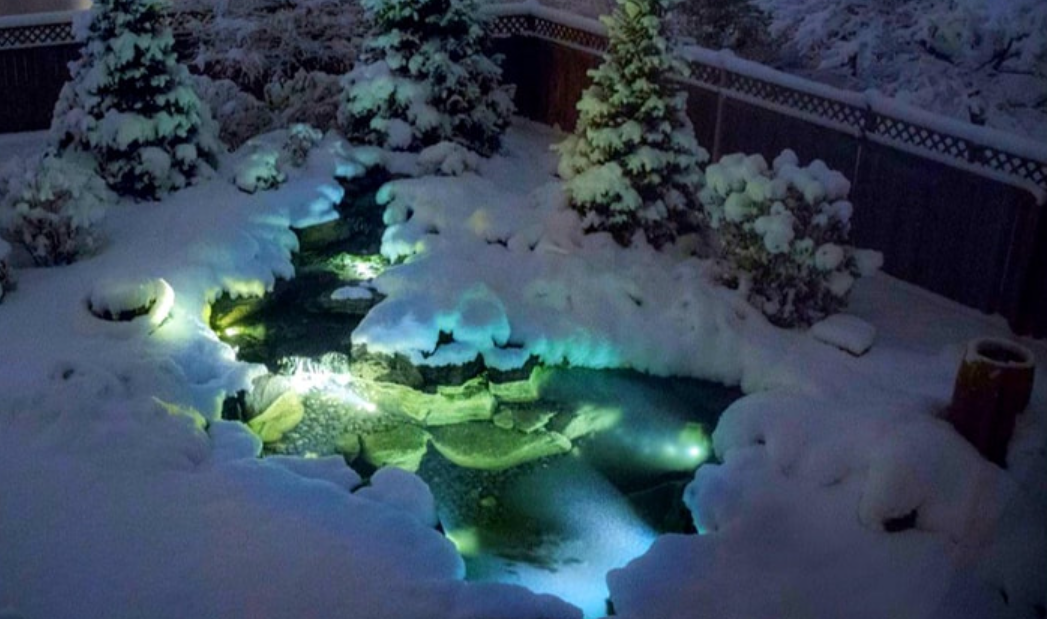Koi fish are amazingly hardy animals and can tolerate a wide range of temperatures. In their native waters, koi are able to withstand very warm and almost-freezing temperatures. When kept in backyard ponds, there are a few points you will need to consider to keep your koi happy and healthy in below freezing temperatures.
If your fish reside in an area that can reach freezing temperatures, be sure to address the following checklist to ensure your fish will survive the winter.
Insulation
The biggest consideration when over-wintering koi outside is to make sure their water will not freeze into one solid block of ice. Surface freezing is fine for most ponds. How many inches down your pond freezes will depend on your weather, so ensure your fish have enough room to safely tuck themselves under the ice. If your pond is overstocked, there is a risk that the fish will be packed in too tightly and run out of oxygen or produce too much ammonia, causing stress that could cause secondary disease.
Most koi ponds built into the ground are well-insulated by the soil; this allows for mostly a surface freeze. Above-ground ponds or temporary holding ponds are at risk of deep freezing. In order to allow for room for your fish, wrap insulation, dirt or blankets around the exposed walls of your pond. This will prevent freezing at deeper levels.

Oxygen Access
Even in frozen ponds, your fish will need oxygen to survive. A solid-ice surface cuts fish off from life saving oxygen and can easily wipe out an entire pond. You must provide some access to air at the water’s surface in order to keep your fish alive. You can do this by installing a pond deicer, aerator or a running water feature.
Pond deicers work by thawing a small area of your pond surface in order to allow for CO2 to escape the water, preventing your pond from becoming toxic. These need to be checked frequently in order to ensure proper function. They do not heat the pond, only a small area of the water at the pond surface,
Aerators work by keeping ice from completely covering the area directly above them. In very cold temperatures, however, the surface may still freeze over so it is smart to use them in conjunction with a pond deicer. Also, you do not want to bring the warmer water from the bottom of the pond to the surface using a bubbler on the bottom. These air stones should be placed just below the surface in the winter.
Running water features work similarly to an aerator by constantly disrupting the formation of a solid ice surface. These work slightly better than an aerator, but can cause supercooling if they are too large and can also freeze in very cold temperatures.
Supercooling
Air exposed to super cold temperatures, such as that within a tall waterfall, can supercool ponds by quickly dropping the water temperature, commonly as the sun goes down. A sudden decrease in temperature can negatively impact your koi and potentially kill them. If you have a tall water feature, it is recommended to bypass it during very cold weather conditions.

Feeding
In colder water temperatures, your koi fish’s metabolism will reach extremely low levels. If the temperature is going to drop below 45 degrees Fahrenheit/7 Celsius, it is not recommended to feed your fish. Your fish may beg for food when the water is warm, but it is best to keep their gastrointestinal tracts free of food that may stop moving through if the water is expected to get colder.

